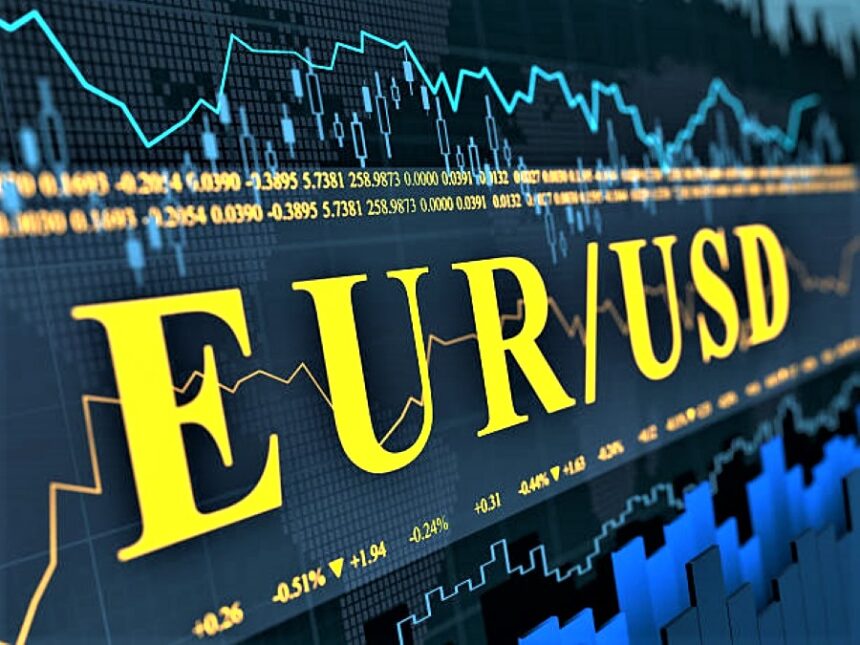Greenback Gets Hit by Tariffs and Debt Fears
The euro continues its bullish march, with EURUSD rising above the 1.1400 level as market participants react to intensifying trade tensions between the US and China, along with renewed fears over US fiscal stability. The currency pair is trading on strong footing early Monday, testing critical resistance levels amid a sharp decline in investor confidence toward US assets.
Markets have entered the week cautious and risk-averse, largely triggered by US President Donald Trump’s latest announcement on tariffs. By doubling levies on steel and aluminum imports—from 25% to 50%—Trump has reignited fears of a trade war that could derail global economic growth and turbocharge domestic inflation.
Trade War Redux: US-China Conflict Escalates
The US-China relationship took another hit over the weekend, when President Trump accused Beijing of violating a key minerals agreement. Chinese authorities responded with stern language, calling the claims “groundless” and threatening retaliation. This fresh trade rift has cast a shadow over hopes for stabilization between the world’s two largest economies.
Risk-off sentiment is back in full force. Investors are concerned that rising tariffs will not only choke global supply chains but also further fuel inflation in the US—putting the Federal Reserve in a precarious position. At the same time, such actions add volatility to financial markets, diminishing the appeal of the US Dollar as a reserve currency.
Moody’s Downgrade Still Weighing on the Dollar
The USD remains under pressure due to long-standing concerns about US fiscal health. After the passage of a sweeping tax reform bill that could add trillions to the national debt, Moody’s downgraded the United States’ credit outlook just two weeks ago. That move triggered a wave of “Sell America” trades, with investors rotating into safer or better-yielding assets overseas.
As the debt narrative intensifies, the broader market consensus seems to be turning bearish on the greenback, despite relatively resilient data. Traders are increasingly skeptical about whether the US can maintain its investment-grade appeal while aggressively increasing its deficit and undermining international partnerships.
US Dollar Sinks Across the Board
Looking at the day’s currency performance, the US Dollar has weakened sharply against nearly all major currencies. The USD Index is down 0.3%, reversing Friday’s gains and setting the tone for what could be a volatile week ahead. According to the FXStreet heat map:
- USD is down 0.68% vs. EUR
- Down 0.59% vs. GBP
- Down 0.89% vs. NZD
- Down 0.71% vs. CHF
- Only slightly stronger vs. CAD (+0.34%)
These moves reflect how the dollar’s vulnerability is being exposed, especially in the face of political decisions that could alter trade flows and fiscal balances.
ECB in Focus: Rate Cut Looming
On the other side of the equation, the Euro is gaining, but the rally could soon face a reality check. The European Central Bank is set to meet this Thursday, and markets are pricing in an eighth consecutive rate cut. The eurozone economy remains fragile, and inflation has been moderating across the bloc.
Even though the Eurozone’s May Manufacturing PMI was confirmed at 49.4, its best in nearly three years, German activity was revised lower to 48.3—highlighting weakness in the region’s powerhouse economy. These mixed signals will pressure ECB President Christine Lagarde to strike a neutral but supportive tone to avoid derailing the recovery.
While further ECB easing could theoretically weigh on the Euro, traders are currently more concerned about the rapidly deteriorating US macro backdrop, which is keeping EUR/USD afloat.
Fed’s Waller Offers a Dovish Lifeline
Adding to the US Dollar’s troubles was the dovish rhetoric from Fed Governor Christopher Waller, who on Monday said the central bank still has room to cut rates later this year—even amid inflationary pressure from tariffs.
Waller’s optimism about potential rate cuts gained credibility following last Friday’s PCE Price Index data, which showed that core inflation in April slowed more than expected:
- Headline PCE YoY eased to 2.1% from 2.3%
- Core PCE YoY fell to 2.5% from 2.7%
These softer inflation numbers suggest that the Fed may retain its dovish bias, especially if tariffs begin to stifle economic momentum.
Key Data This Week: ISM and Eurozone CPI in Spotlight
Market participants are also bracing for an event-packed week, with major data releases expected to offer more clues on where the EURUSD might be headed next.
In the US:
- ISM Manufacturing PMI (Monday): Forecast to tick up but remain in contraction territory. A better-than-expected print could momentarily lift the USD.
In the Eurozone:
- CPI data (Tuesday): Could confirm further disinflationary trends, strengthening expectations of ECB rate cuts.
If the data confirms a slowdown in both regions, relative performance will determine the currency direction. For now, with the US embroiled in tariff drama and debt concerns, the Euro remains in the driver’s seat.
Technical View: EURUSD Facing Resistance Band
From a technical standpoint, EURUSD has cleared the 1.1400 psychological level, and bulls are now targeting the resistance zone at 1.1415–1.1435. This area has historically acted as a ceiling for upward movements.
A decisive break above this resistance zone could open the door to a broader bullish continuation toward 1.1500, especially if macro fundamentals continue to weigh against the Dollar. However, failure to break through might result in a short-term pullback, particularly if ECB dovishness outweighs US negativity.
Market Sentiment: Risk-Off Mode Prevails
Equity markets in Asia are under pressure, and European bourses are set to open lower. Investors are clearly in risk-off mode, with geopolitical uncertainty, weak US data, and looming central bank decisions all contributing to market unease.
Treasury yields are slipping again, another bearish signal for the Dollar. Lower yields reduce the currency’s carry appeal, particularly against other regions where central banks are moving more cautiously.
Conclusion: EURUSD Stays Firm Amid USD Turmoil
The EUR/USD rally beyond 1.1400 reflects a broader loss of confidence in the US Dollar, stemming from fiscal instability, trade chaos, and a potential policy misstep by the Trump administration. While the European economy has its own set of issues, the Euro is benefiting from a perception of relative stability and an orderly ECB policy path.
With crucial events such as the Eurozone CPI and ECB decision ahead, the Euro could either gain further ground or face selling pressure. However, for now, markets are clearly punishing the Dollar, and the EURUSD may continue to climb unless sentiment rapidly improves in Washington.
[faq-schema id=”39733″]









